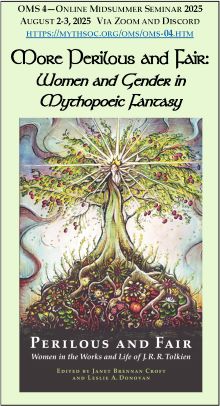Home > MYTHSOC > Mythlore > Vol. 41 (2022) > No. 1 (2022)
Abstract
Few characters change more in their depiction throughout ‘traditional’ Arthurian literature than Morgan le Fay, who transitions from the benevolent and supernatural Queen of the Isle of Apples to the mortal sister of King Arthur with a complicated relationship to her brother and his court. These two versions of the Arthurian enchantress are represented in Geoffrey of Monmouth’s Vita Merlini and the French Vulgate Cycle, and they parallel two of Tolkien’s prominent female characters in The Silmarillion: Lúthien and Aredhel. Establishing parallels between Monmouth’s Morgen and Tolkien’s Lúthien demonstrates both a connection to the Celtic tradition and a departure from that tradition through a positive portrayal of female power. While Morgan le Fay has often been portrayed as a sinister antagonist to Arthur and his court, recent scholars have reframed her role in the narrative as a challenge to the individual and systemic flaws within Camelot. Applying this perspective to Aredhel’s narrative allows for a new interpretation of her character, her brother Turgon, and the fall of Gondolin.
Creative Commons License

This work is licensed under a Creative Commons Attribution-NonCommercial-No Derivative Works 4.0 International License.
Copyright held by Artist


